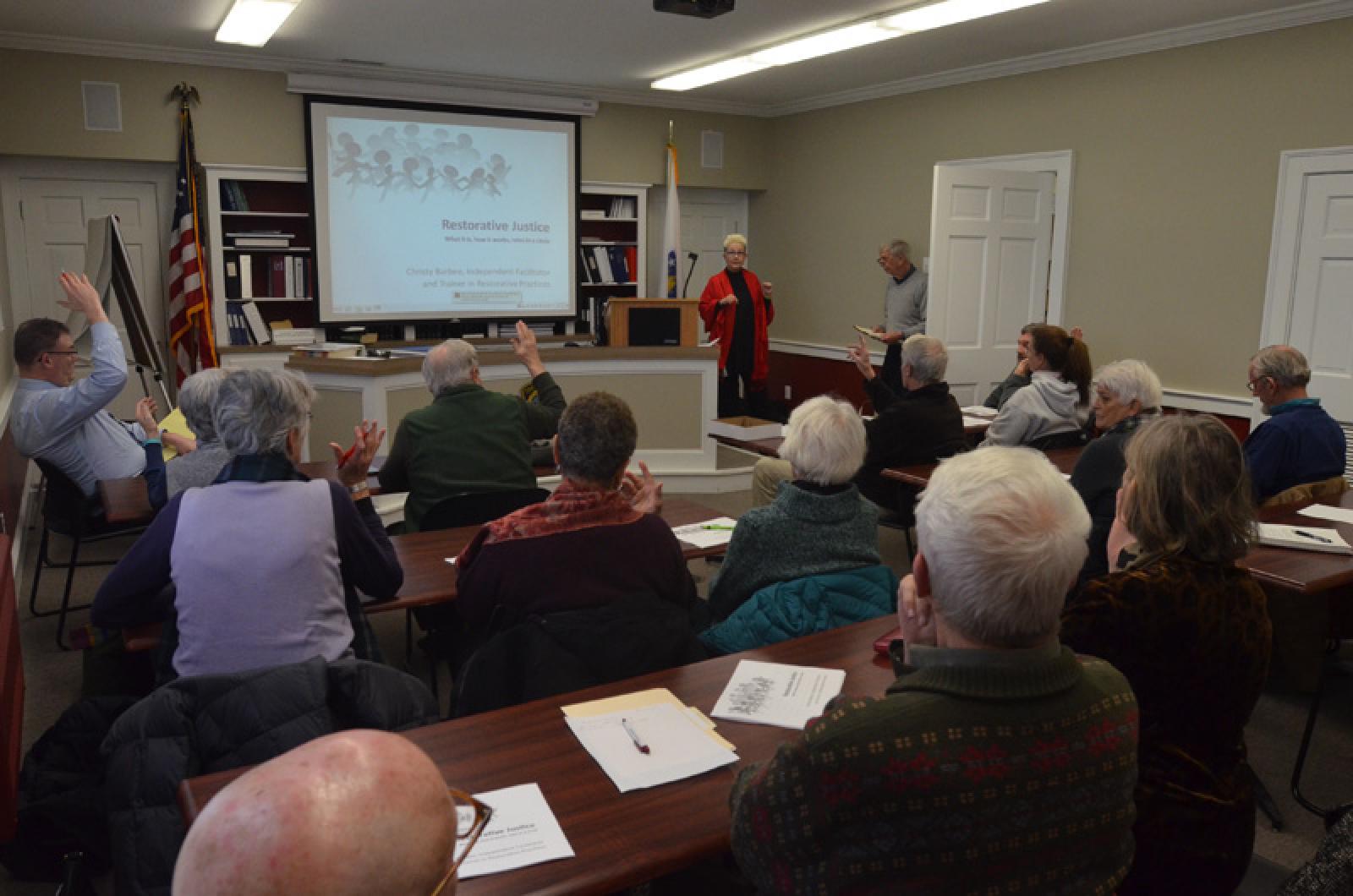In Hawaii they call it Ho’oponopono, in New Zealand it’s Te Whanau Awhina. And the Wampanoag people have a similar traditional process — a way of finding a balance or resolution between the victim of a crime and the perpetrator. Another widely used term for it today is restorative justice, or more simply, the circle.
“Throughout human history and among many cultures, people have gathered in a circle to resolve problems that arise between members of their community,” Christy Barbee, a facilitator, told a group that met at the Oak Bluffs police station last Friday.
The meeting was organized by the Martha’s Vineyard Mediation Program and Oak Bluffs resident Peter Meleney, who helped develop a restorative justice program in Maryland in 2003. “Restorative justice is designed to, among other things, keep young people from getting a criminal record for a first, usually minor, offense,” he said.
When Peter presented the concept to police chief Erik Blake and Det. Jim Morse of the Oak Bluffs police force, they were interested. Detective Morse is both a police officer and a lawyer who works as a prosecutor for Oak Bluffs cases. He said he immediately saw the advantage of keeping minor incidents out of the time-consuming and costly criminal justice process. Restorative justice is also a key part of the Oak Bluffs community policing concept. “Restorative justice helps the police get to know their community more intimately and be involved with their community in more depth,” Ms. Barbee said at the meeting.
The restorative justice or circle process brings together the victim and offender along with their families and other members of the community, including the police department, to discuss what happened, how everyone was affected and what the group wants to have happen to repair the harm, as much as possible. A key element is that the perpetrator admits guilt and takes responsibility for his or her actions. The process ends with an agreement signed by the victim and offender in which the offender promises to make a mutually acceptable restitution to the victim. A case coordinator then assures that the agreement is fulfilled.
The types of offenses eligible for the circle process include vandalism, petty larceny, break-ins and shoplifting.
According to Ms. Barbee, restorative justice is more effective than the criminal justice system. Studies have shown that both the victim and offender achieve a higher level of satisfaction and that recidivism (the chance of the offender repeating the crime) is greatly reduced.
The circle process involves volunteers who are trained in three key roles. A facilitator guides the meeting, during which the affected people gather to restore balance. A case coordinator manages the case from beginning to end and keeps a record of it. And a community member acts as a witness and to provide input.
About 20 people attended the meeting Friday, about a third of them involved in mediation on the Island. Most signed up for training on Feb. 17 and 18 as either a restorative justice facilitator or community member.
Anyone interested in learning more can contact Peter Meleney at pmeleney@comcast.




Comments (2)
Comments
Comment policy »